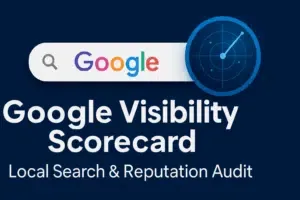Google’s AI Overviews now dominate above-the-fold search space, and brands who ignore them risk disappearing from visibility. Winning requires more than keywords—it demands structured, credible, and optimized content tuned for how AI consumes and displays information.
The solution isn’t to fight AI Overviews—it’s to optimize for them. Answer Engine Optimization (AEO) and Generative Engine Optimization (GEO) are no longer optional strategies. To win visibility in 2025, your content must signal clarity, authority, and trust in a way that AI models can easily surface.
Here are the 12 most important tactics (ranked by impact) with real-world examples and Pro Tips
1) Answer Questions Directly
Example:
Q: What is an AI Overview in Google Search?
A: AI Overviews are summaries generated by Google’s AI to answer queries directly at the top of search results.
Pro Tip: Use a 40–60 word direct answer in the first paragraph, then elaborate below.
2) Optimize for People Also Ask (PAA)
Example:
If “How do I rank in AI Overviews?” appears in PAA, create a heading <h2> with that question and a 1–2 sentence answer.
Pro Tip: Scrape PAA questions weekly—these shift fast. Use them to guide your content updates.
3) Structure Content with Schema
Example:
- Use FAQ schema to mark up your Q&A section.
- Add HowTo schema for step-by-step guides.
- Wrap articles with Article + Person + Organization schema.
Pro Tip: Validate with Google’s Rich Results Test before publishing.
4) Add Authoritative Sources & Citations
Example:
When citing “70% of users prefer AI answers,” link to a Pew Research or Statista report, not a random blog.
Pro Tip: Outbound authority links strengthen your own trust score in AI systems.
5) Demonstrate E-E-A-T On-Page
Example:
- Author bio with credentials (“15 years in SEO”)
- Methodology notes (“Data verified via GA4 + GSC”)
- Real company info in footer
Pro Tip: Treat your About/Author pages like landing pages for Google’s trust evaluation.
6) Refresh Content Frequently
Example:
- Update 2023 “AI Overview” articles with 2025 data.
- Add “last updated September 2025” to signal freshness.
Pro Tip: Rotate updates quarterly—AI favors content that reflects real-world change.
7) Build Topical Authority (Cluster Strategy)
Example:
- Main Pillar: 12 Tips to Rank in AI Overviews
- Support: AEO vs GEO Quick Study, Local SEO in AI Search, Schema Optimization Guide
Pro Tip: Interlink with keyword-rich anchor text (“See our AEO vs GEO guide”).
8) Use Lists, Tables, and Snippets
Example:
Compare “Traditional SEO vs AI Overview SEO” in a two-column table.
Pro Tip: Place summary tables near the top – AI scrapes these early.
9) Target Long-Tail & Conversational Queries
Lorem ipsum dolor sit amet, consectetur adipiscing elit. Ut elit tellus, luctus nec ullamcorper mattis, pulvinar dapibus leo.
Example:
Instead of “AI Overview SEO,” optimize for:
- “How do I rank in AI Overviews?”
- “Best way to optimize content for Google AI results”
Pro Tip: Use your own customer emails/FAQs to mine natural phrasing.
10) Optimize Page Speed & Core Web Vitals
Example:
- Use WebP for images.
- Lazy-load videos.
- Keep CLS under 0.1 and LCP under 2.5s.
Pro Tip: Even if AI cites you, Google may not show your snippet if UX scores are poor.
11) Earn Mentions, Links, and Citations
Example:
Get quoted in an industry publication (even without a link). Google counts the mention as a credibility signal.
Pro Tip: PR campaigns + HARO (Help a Reporter Out) generate brand mentions that AI trusts.
12) Monitor AI Overview Triggers & Iterate
Example:
Track when your target keyword shows an AI Overview. If competitors are cited, analyze their structure and replicate with improvements.
Pro Tip: Use SERP Sniper Overwatch, SEMrush, or Ahrefs to monitor query classes that trigger AI results.
Adapt now to own the space that matters most in 2025
Ranking in AI Overviews is a discipline that requires precision (clear answers), credibility (E-E-A-T + sources), and adaptability (People also Ask (PAA) + freshness). Think of AI Overviews as the new front page of search. Get your answers structured, your site speed optimized, and your authority signals visible.
Those who adapt now will own the space that matters most in 2025 and beyond.
Want your pages to appear inside Google’s AI Overviews?
Web SEO Houston can implement this playbook end-to-end. Content, schema, technical, and authority development.
👉 Book a strategy call and let’s put your brand where buyers look first.

Michael Klasno is SERP Sniper – Building local optimized websites for Attorneys, Law Firms and Business Professionals in Houston and Southeast Texas.
Michael Klasno is a consummate Search Engine Optimization (SEO) Specialist with an impressive 20-year tenure in the digital marketing landscape. Throughout two decades, Michael has been at the forefront of evolving website design & SEO strategies, seamlessly integrating the latest trends with time-tested methodologies.
His SEO expertise encompasses a vast array of skills, including keyword research, technical SEO, (both on-page and off-page) Local SEO, Google Business Profile optimization, SEO auditing, competitive analysis, and content strategy formulation.
“By building a cost effective corporate or business website that looks great and has a high conversion rate you can dominate the organic search results.”



